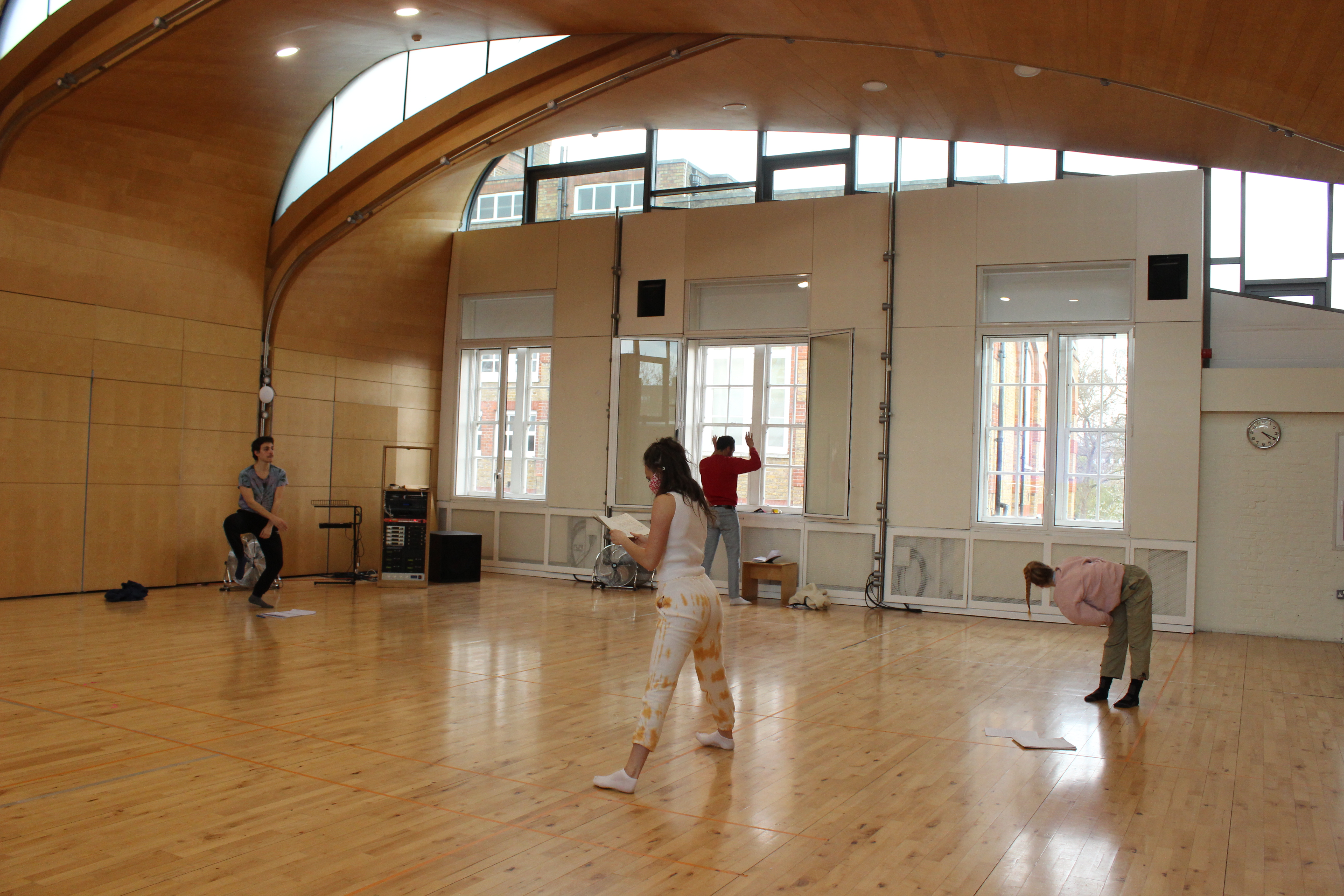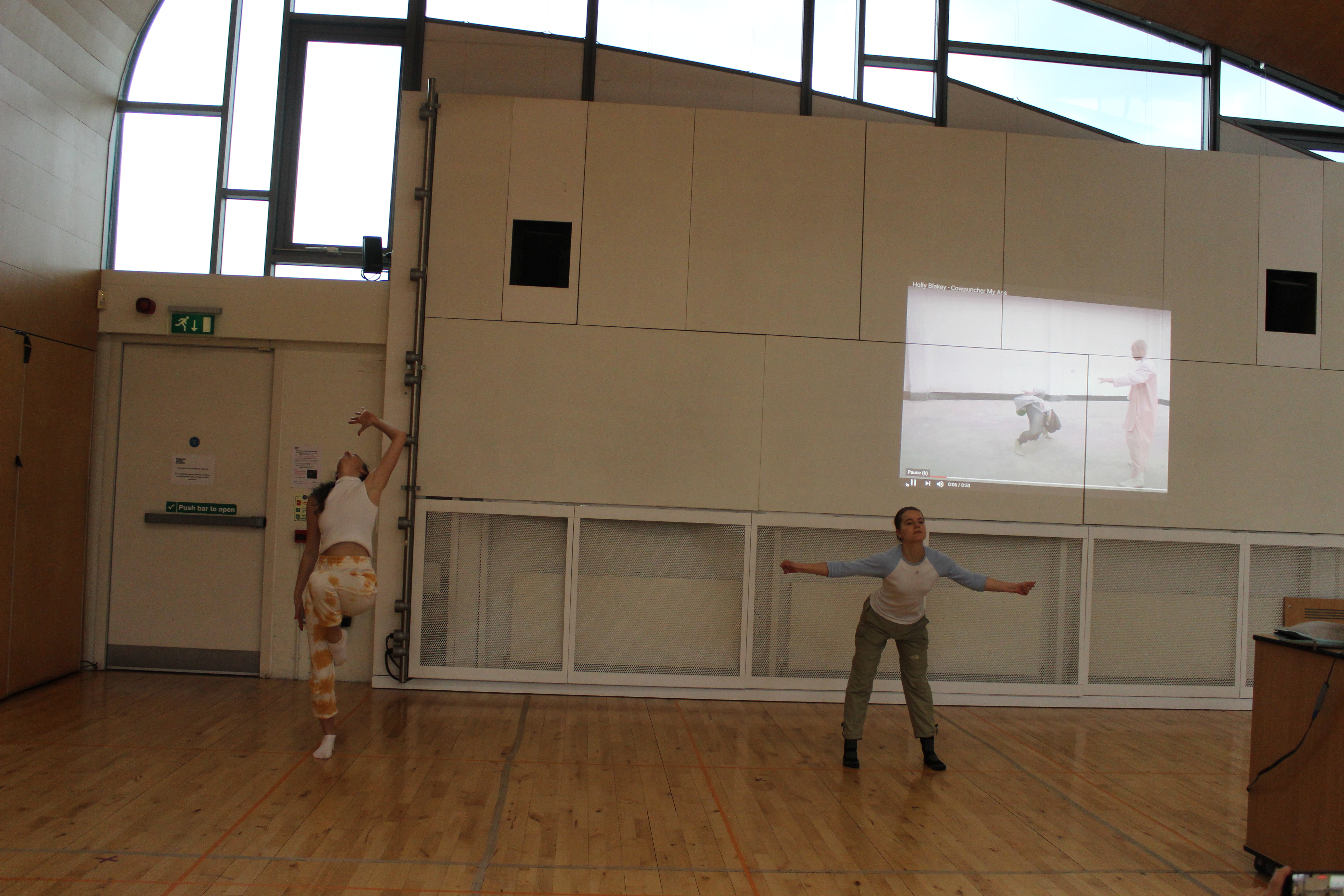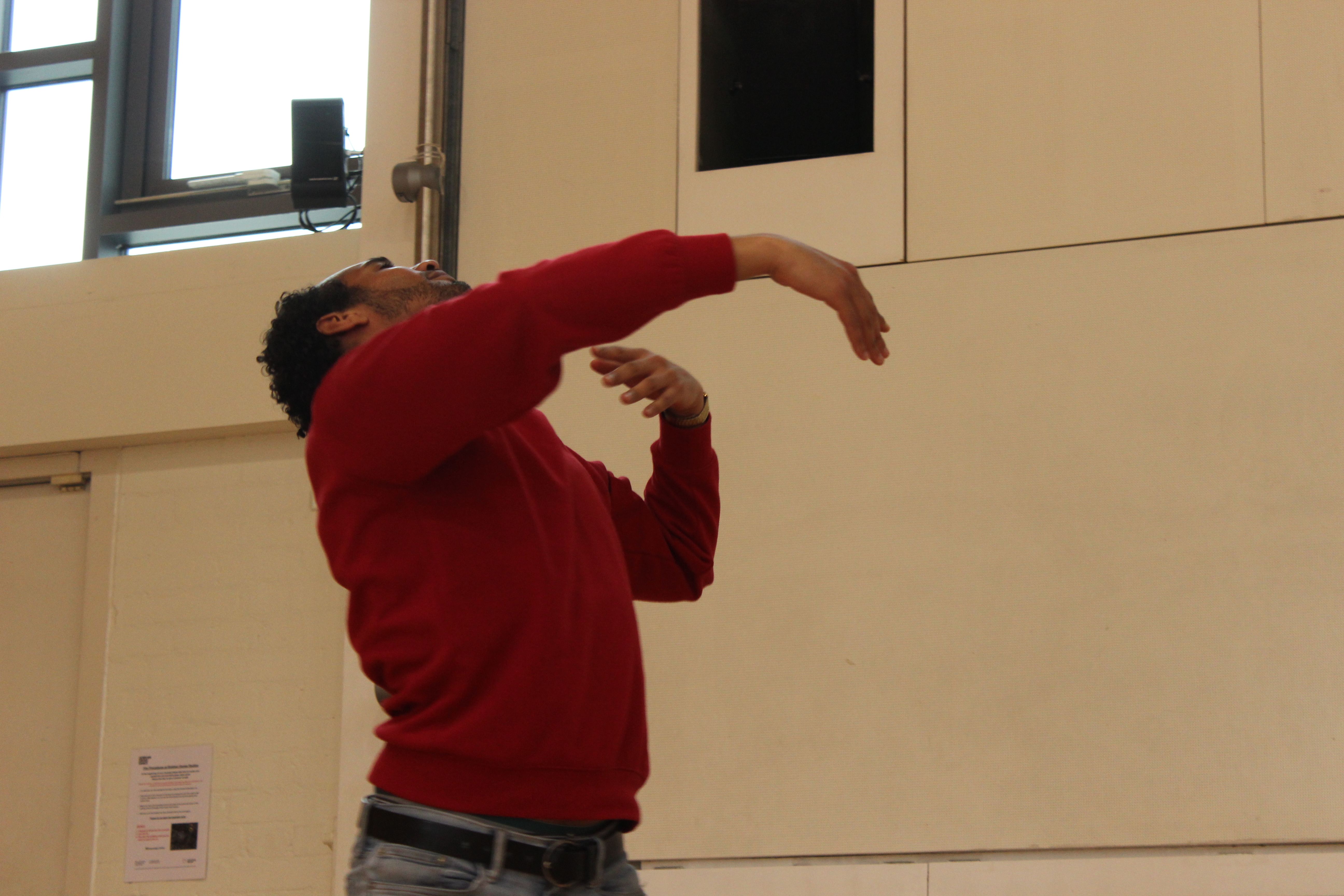DAJ dance writer, Stella reflects on the day 2 tasks led by herself and Katie.
“As a warm-up, we started with a mindmap of a task we’d done in the past 24 hours — I focussed on my cycle to the studio. In my mindmap, I picked out sensations and words such as the wind, the juxtaposing experiences of freedom and fast-pace cycling, the anticipation of the red light and suddenly squeezing the breaks tight. We then transposed the mindmap into a ‘bodystorm’ — embodying these sensations, phrases and the associations between words through movement.
We added new words and phrases to our original mind map following the ‘bodystorm’. I found that switching between written mind map and moving bodystorm helped unlock ideas and thoughts when I hit a ‘block’ or felt stuck, it also helped me to move beyond the literal or descriptive to more abstract ideas.
We then moved onto our task. Together, we watched a short clip of filmed dance — either Holly Blakey’s ‘Cowpuncher My Ass’, Nick Cave’s ‘Soundsuits’ or Lucy Suggate’s ‘Pilgrim’. We then notated the movement (through use of words or symbols; a list of instructions or an abstract poem), however best we could encapsulate the work for someone else to understand. We then passed our scores to someone else for reconstruction. It finished with performances of the re-created dances in front of the original copy projected behind the performers.
I chose to notate the ‘Cowpuncher My Ass’ piece by Holly Blakey and I gave it to Katie to recreate. I was given Sophie’s notation of ‘Cowpuncher My Ass’ to recreate. I was really surprised by the outcome of these tasks; I was initially expecting the abstract ‘Soundsuits’ video clip to be very hard to notate and recreate. In reality, I found that the more abstract and challenging dances actually generated the more creative and unusual forms of responses through notation and movement.
It was surprising how the re-creation of ‘Soundsuits’ captured much of the essence and tone of the original and yet on the surface did not bear any of the same elements of the original (e.g. no costume or mask).
It would’ve been interesting to leave more room for uncertainty and surprise, such as not showing all the videos beforehand. This would mean that when we were re-creating them, we could not rely on our memory of the video.
The task left me wondering: What are the boundaries between re-creation, copying, appropriation and theft? What makes an ‘original’ or defines the ‘authentic’? Who is the author of dance? How owns dance? What power lies in this ownership/authorship?”
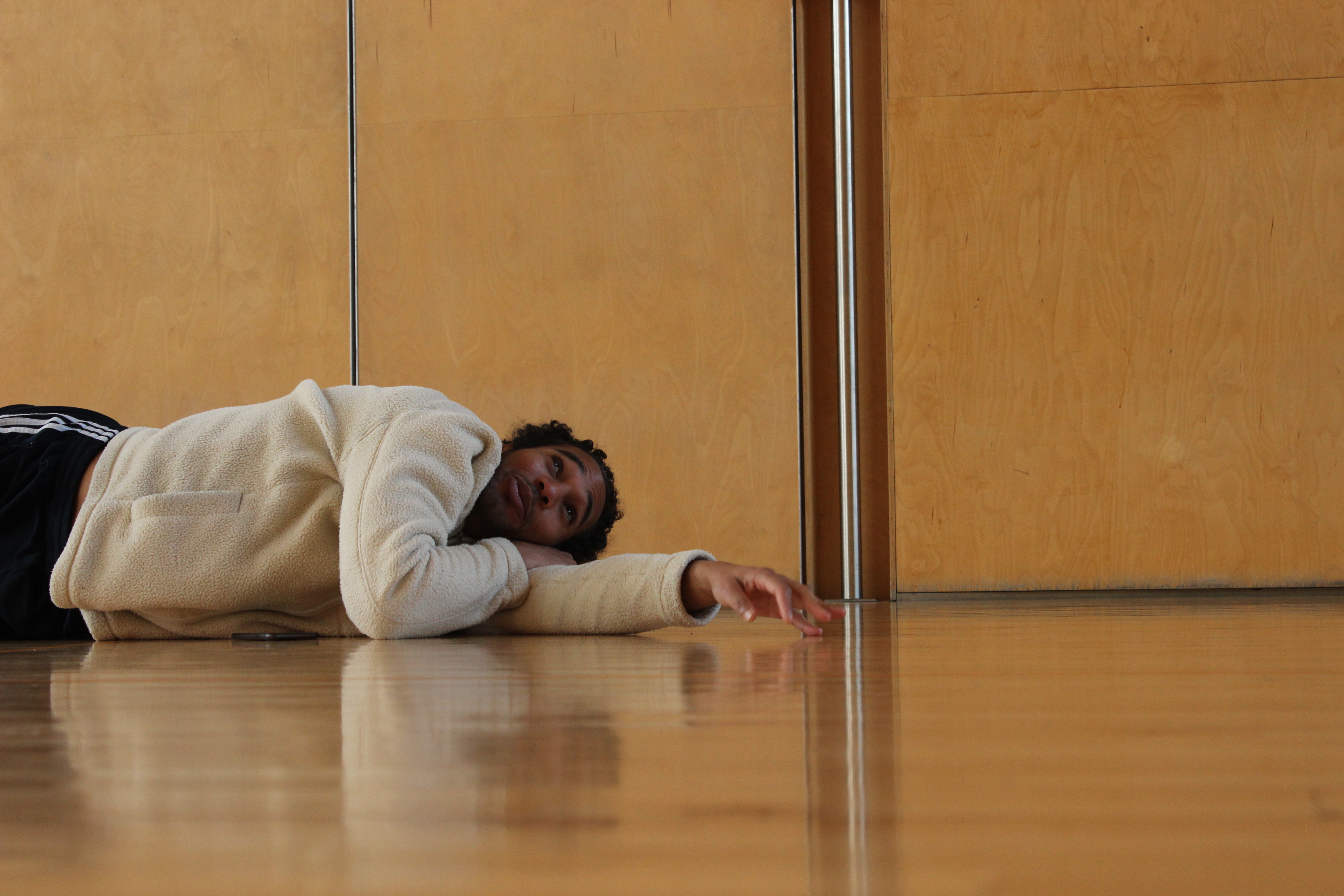

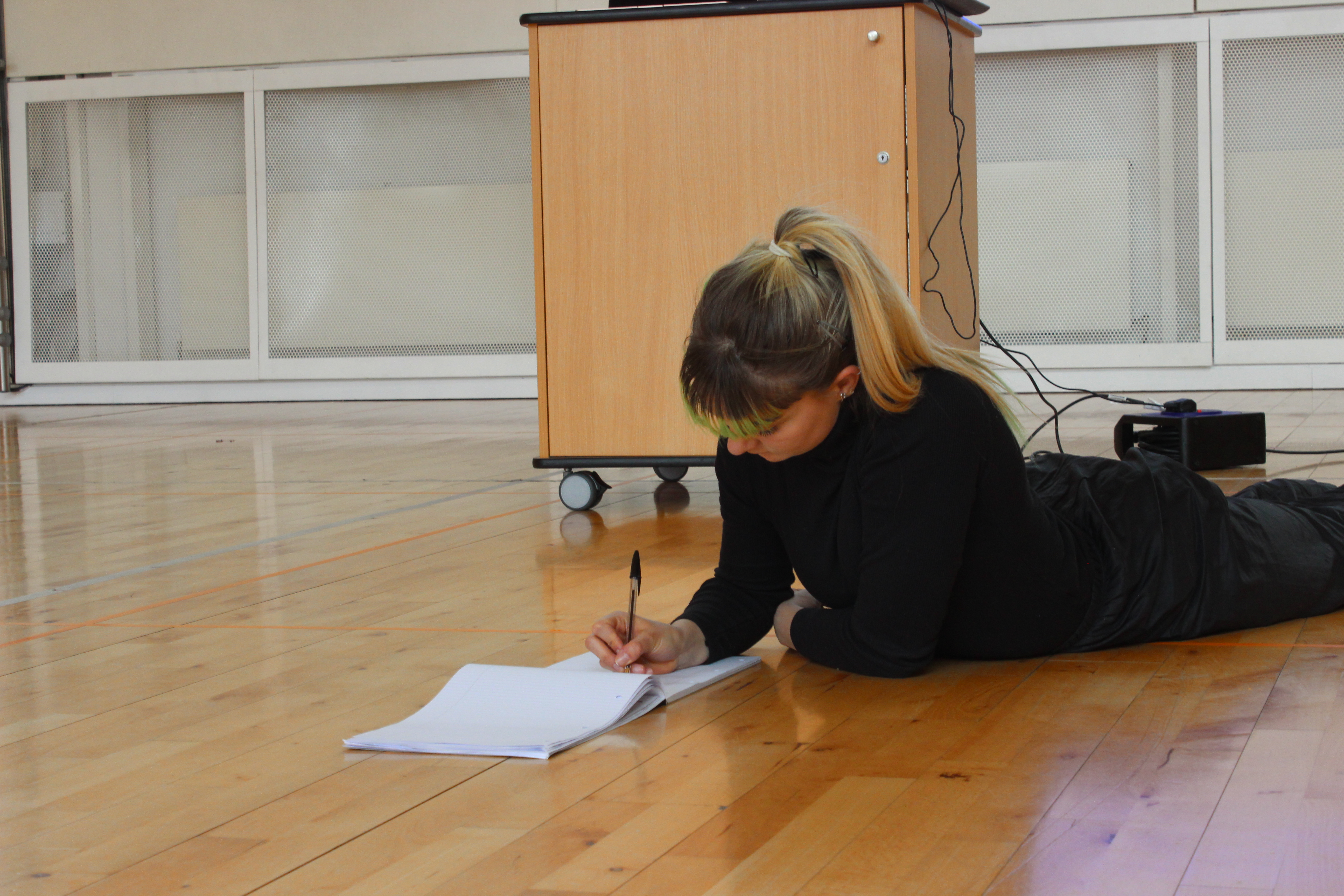
INTENTIONS RAISED THROUGHOUT THE DAY
- Writing as notation; things are lost from original both in the writings and the interpretation of it
- (In response to mindmap/bodystorm warm-up): When on the page words feel concrete. I felt it difficult to fully articulate these words through movement and so I let the meaning evolve and change into something else. I had to let go of the words a little and trust the movement that I was creating, which in the moment was honest and true to me.
- When writing about dance from someone’s original work, the tone of the original work may still be present. Alternatively, the person using the original work as inspo may create and commit to a new tone. Although there is loss here, there is also gain.
- Can traditional reviews fully encapsulate the chaos of dance?
- Interesting to see how writing/notation can emulate and reimagine existing dances.
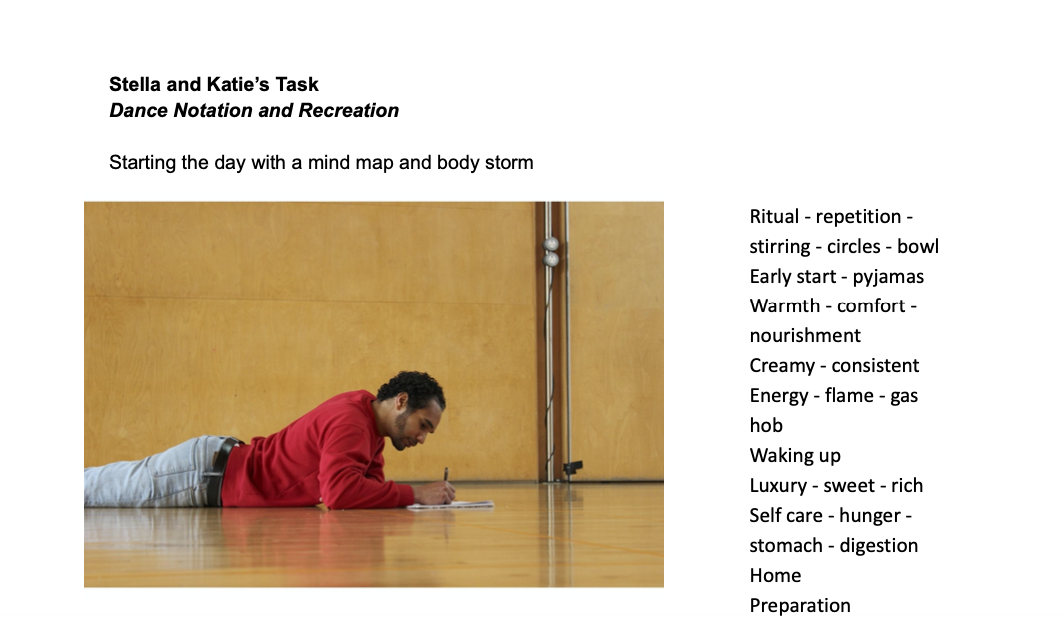
“When on the page, words feel concrete”
To document the second day, Stella created a downloadable file that contains the questions and intentions.
